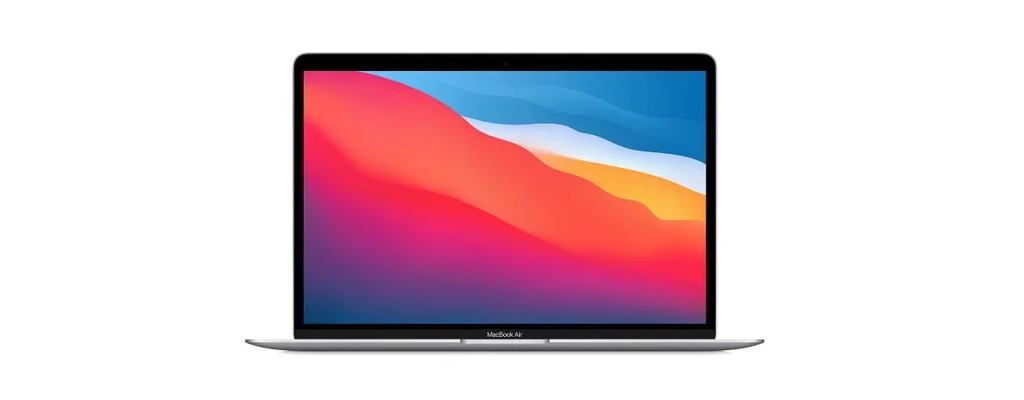This is the start of something huge for Apple: computers made using its own chips. The M1 chip powering the new Apple MacBook Air M1 turns out to be a big leap forward for laptops. It’s simply screamingly fast for a mid-price, lightweight machine.
Actually, it’s screamingly fast for almost any laptop. Its benchmark scores are phenomenally high and, in practical tests such as video encoding or compressing files, we saw performance pretty much in line with hefty pro machines, not thin and-light laptops like the Air. That’s all paired with storage that’s incredibly fast too, around double the speed of what the previous MacBook Air achieved.
Amazingly, with all this power at your fingertips there’s no fan inside. The MacBook Air gets warm, but not excessively hot, and actually seems cooler than the previous model.
In combination, very fast storage and a very fast processor means you don’t really have to wait for anything to happen. Open the lid and by the time you’ve lifted it the screen is waiting for you to put your finger on the scanner – which instantly unlocks it. Apps open immediately, working with files is lag-free, website loading is as fast as your internet can handle … there’s just no compromise for having a thin and light laptop.
Remarkably, this all applies to the graphics too. The M1’s GPU appears to be close to what a mid-level discrete graphic chip is capable of, and is a massive leap forward from what came before in these kinds of machines. Some serious games appear to run flawlessly, although not on high graphics settings. This was a non-starter with the previous model. The Apple MacBook Air M1 runs macOS 11 (Big Sur), which has been optimised for the new chip, to help apps make the most of the multi-core processor.
It can run iPhone and iPad apps too, although performance is hit and miss since you don’t have a touchscreen on your laptop.
It looks and works exactly like any other Mac with macOS 11, but there are some key differences because of the different chip. Because the M1 chip is built very differently to Intel chips, ideally all apps would have a custom version made for the M1 machines. All of Apple’s apps do and brands such as Adobe are rolling out its apps quickly too. But until then, Apple has Rosetta 2 built into the operating system so any Mac app that hasn’t had an M1 version made should still work, and quite fast too. The new MacBook Air looks identical to the old. It has the same tough aluminium build, and impeccable fit and finish, and it’s totally sturdy.
The screen is the same as the previous Intel MacBook Air model: a mere 13-inches, but it now supports the much wider range of colours. The new keyboard and trackpad are large, easy to use and respond perfectly. Like many laptops today, there’s a fingerprint sensor that doubles as a power key.
On the left-hand side, you have two USB-C ports that actually pull triple duty: they’re also Thunderbolt 4 ports and power ports. This makes them stunningly fast for hooking up external drives, and they can output video to external screens up to 6K resolution. The lack of USB ports is probably the deal-breaker for most users. If you’re using one port to power up you laptop, that leaves just one port for a monitor, mouse and keyboard, and that’s before you plug in your flash drive, webcam or printer.
If you can afford it, the M1 powered Air will plough through your tasks, whether it’s office work or multimedia production, without slowing down. If the high price bothers you, remember that Apple laptops typically outlast other brands.
13.3” screen, Apple M1 CPU, 8 or 16 GB RAM, 256 GB 2 TB SSD storage, 18 hours battery (claimed), 2× USB-C, macOS 11, 1.29 kg, from R19 000







